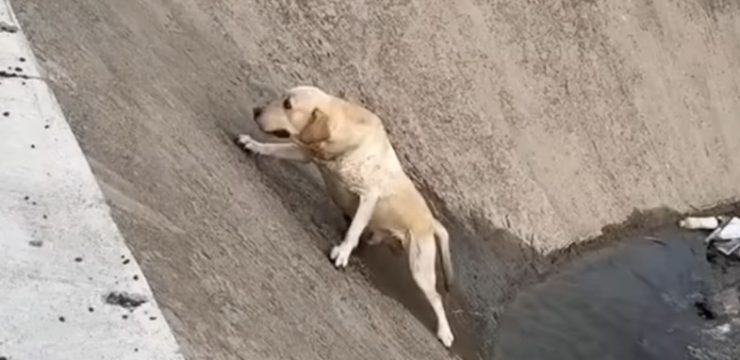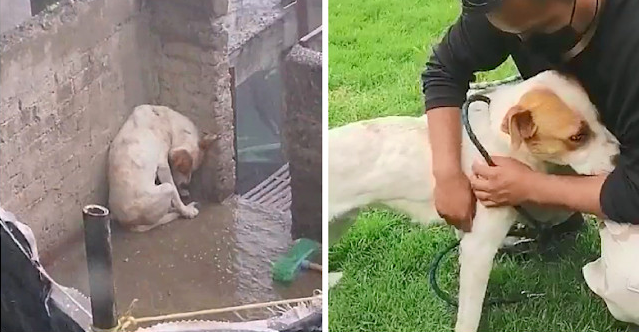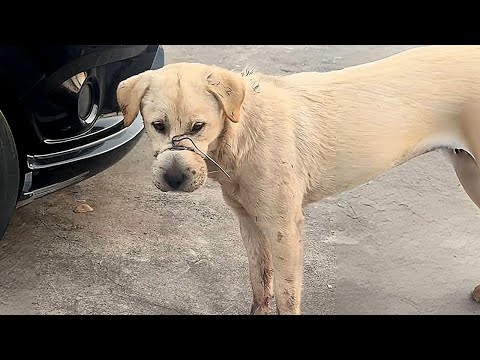On a quiet, nearly forgotten stretch of rural countryside, a story of strength, compassion, and unwavering loyalty slowly took shape—one that would soon spread far beyond the dusty road where it began. At the center of it all was Kira, a gentle, affectionate dog who had been abandoned in a collapsing old barn. For weeks—perhaps even longer—she survived the only way she knew how: by scraping together leftover scraps and accepting rare moments of kindness from strangers who happened to pass by. Despite the harshness of her surroundings and the weakness in her frail body, Kira somehow held on to her tender spirit. Her tired eyes still held a flicker of warmth, and her tail still managed a faint wag whenever she heard a friendly voice.

Kira’s story gained its first audience when a compassionate local reporter learned about her situation. Deeply moved by the dog’s resilience and the painful conditions she was living in, the reporter decided to share her story publicly. The hope was simple—raise awareness and pray that someone would step forward to help. The article quickly spread across the community, painting a vivid picture of a dog urgently in need. Yet despite the sincere appeal, the initial response was heartbreakingly still. No rescue organizations reached out right away. Days continued to pass, the barn grew colder, and the silence only deepened. Kira’s future remained painfully uncertain.
The conditions she endured were truly difficult. She had been tied up and left behind in that deteriorating barn, exposed to the weather with barely enough food or water to survive. Her fur was patchy and irritated from a severe skin condition, her ribs protruded sharply, and her eyes were clouded with exhaustion. She was malnourished, dehydrated, and clearly in distress. But when rescuers finally arrived—several days after the reporter’s story began circulating—Kira did something remarkable. Instead of shrinking back in fear, she greeted them with a soft, weary wag of her tail. Her body was fragile, but her spirit still managed to shine through the darkness.

The rescue team understood immediately that her condition was critical. They wasted no time. With gentle hands, they loosened the rope that had held her for so long and carried her out of the place where she had been left to fade away. They quickly arranged transportation and rushed her to the closest veterinary hospital, determined to give her a fighting chance. It became a race against time. Every minute mattered. But for the first time in what must have felt like ages, Kira was surrounded by people who saw her not as a burden, but as a life worth saving.
At the clinic, Kira was met by a team of compassionate veterinary professionals who moved swiftly yet carefully. They gave her fluids, eased her pain, and began a thorough examination. Blood tests, X-rays, and physical evaluations were performed to understand the true extent of her suffering. At first, some feared she might be battling an underlying illness. But the truth was both devastating and strangely hopeful. There was no hidden disease. Kira’s condition was simply the tragic result of long-term starvation and neglect. It was heartbreaking, but it also meant her body had a chance to heal. With steady nourishment, medical care, and kindness, Kira could recover—and even thrive.
Over the following days and weeks, Kira’s recovery became a symbol of hope. Her caretakers dedicated themselves fully to her healing, feeding her small meals throughout the day, soothing her damaged skin, and surrounding her with patient, reassuring affection. Slowly, she began to regain her strength. Her once dull and thinning coat started to grow back with a soft shine. Her legs, once too weak to support her, gradually strengthened as she stood and walked with increasing confidence. But the most touching change wasn’t physical—it was in her eyes. The sadness that once lingered there began to fade, replaced by curiosity, trust, and even joy. Kira learned to believe in humans again.
Her gentle personality stayed consistent throughout every step of her journey. She welcomed other dogs, accepted affection from strangers, and offered quiet comfort to anyone who needed it. Kira reminded everyone she met of just how resilient animals can be—how they can endure hardships that would break many, and yet still find room in their hearts to love again. Her recovery soon became a powerful reflection of the importance of compassion and the incredible impact that a second chance can have.

Today, Kira is almost unrecognizable compared to the fragile, starving dog found in that old barn. Her once bony frame is now strong and healthy. Her fur has grown back thick and soft. She no longer spends her days alone. Instead, she enjoys the company of people who adore her. She runs across grassy yards, curls up in warm, cozy spaces, and soaks in the affection she was denied for so long. Kira stands as living proof that healing is possible, even after the darkest moments.
Her story serves as a powerful reminder that no animal should ever suffer silently. It shows how important it is to speak up, take action, and believe that every life—no matter how broken—deserves a chance. Kira’s journey from abandonment to safety is more than a rescue story; it is a call for awareness. It highlights the importance of animal welfare groups and the everyday individuals who support them.
If Kira’s story touched your heart, please share it. Let her experience be a voice for the voiceless. Together, we can build a world where no dog is left behind, where every creature in need finds love, and where stories like Kira’s become celebrations of hope rather than cries for help. Compassion saved Kira. Let it inspire us to save many more.





